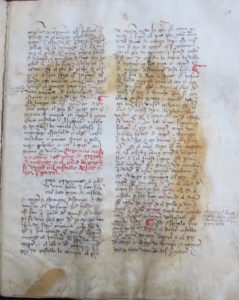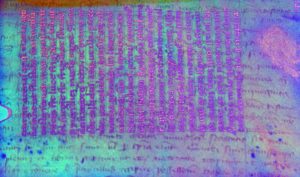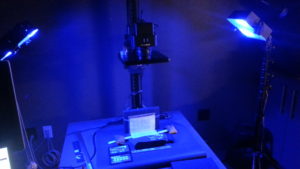

The Library of Stains Project (#StainAlive) is using new technologies for “dirty old books.” Multispectral imaging has increasingly been applied to the study of ancient and medieval manuscripts in order to uncover material evidence not visible to the naked eye. The results from projects such as the Archimedes Palimpsest and the Sinai Palimpsests Project are revolutionizing manuscript studies. Mike Toth, the imaging specialist involved in the above projects, will be bringing his equipment to the University of Wisconsin December 11-13 as part of a CLIR Microgrant, led by Erin Connelly, Alberto Campagnolo, and Heather Wacha, CLIR Postdoctoral Fellows in Data Curation for Medieval Studies.

The team is gathering imaging data as a first foray into providing a fixed dataset that will characterize stains commonly found on manuscripts and provide new approaches for understanding the material makeup and uses of these medieval manuscripts. Four institutions, the University of Wisconsin, the University of Iowa, the University of Pennsylvania and the Library of Congress, have generously offered their manuscript collections for imaging and the Postdoctoral Fellows have been busy identifying the “dirtiest” books with the “best” stains. To learn more, see below:
Dec. 13, 10:00-11:30 am, 9th Floor, Memorial Library
Mike Toth will be giving a public lecture and demonstration of the multispectral imaging process and its abilities to advance the study of cultural artifacts.
Dec. 11 & 12
If you cannot attend the lecture/demo but would like to see the imaging process, please email Heather Wacha (wacha2@wisc.edu) to set up a time to visit the darkroom on Dec. 11 or 12.